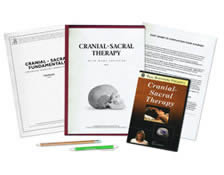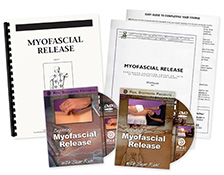Bodywork is perfectly suited for reducing the symptoms of Attention Deficit Hyperactivity Disorder (ADHD). ADHD is a condition typically appearing in young children, although teenagers and adults may also be affected. Someone with ADHD has difficulty controlling their behavior and/or paying attention. It is estimated that between 3 and 5 percent of children have ADHD, or approximately 2 million children in the United States.
Symptoms
The principal characteristics of ADHD are inattention, hyperactivity, and impulsivity. Symptoms begin over the course of many months, often with impulsiveness and hyperactivity preceding inattention, which may not emerge for a year or more. A child who “can’t sit still” or is otherwise disruptive will be noticeable in school, but the inattentive daydreamer may be overlooked. The impulsive child who acts before thinking may be considered a “discipline problem,” while the child who is passive or sluggish may be viewed as unmotivated. Each of these children may have different types of ADHD.
All children are sometimes restless, sometimes act without thinking and sometimes daydream. When the child’s hyperactivity, distractibility, poor concentration, or impulsivity begin to affect performance in school, social relationships with other children, or behavior at home, ADHD may be suspected. Because the symptoms of ADHD vary so much, ADHD must be diagnosed by a professional. Primarily consisting of stimulants, pharmaceutical intervention is the first choice in treating ADHD. In an effort to control affected individuals, an increasing number of school age children are regularly medicated.
The Brain
The suggested etiology of ADHD consists of many proposed theories. Whether stemming from genetics, environment or trauma, most experts agree the brains of individuals with this condition function differently than those unaffected. Research scientists have learned a great deal about ADHD by using modern brain imaging technology. National Institute of Mental Health (NIMH) researchers found that children with ADHD had 3 to 4 percent smaller brain volume in several regions, than age and gender matched controls. According to Jay Gordon, MD, a “deficiency in central nervous system dopamine probably causes many, if not most, of the problems associated with ADHD.” It is no surprise that the most popular medications for this condition increase dopamine levels within the brain.
The Autonomic Nervous System
Two structures comprise our nervous system, the somatic nervous system and the autonomic nervous system. The autonomic nervous system assures proper functioning of involuntary actions, such as heart rate, dilation of blood vessels and our body’s secretion of chemicals. The autonomic nervous system has two sub-divisions, the sympathetic and the parasympathetic. The sympathetic system provides us with adrenaline (the fight-or-flight response), while the parasympathetic is responsible for relaxation.
The sympathetic portion of the autonomic nervous system appears to be the predominant force in ADHD, overriding the balancing role of the parasympathetic system. Bodywork can be a critical component of ADHD recovery because it accesses and initiates the parasympathetic nervous system response.
Proof
At the Touch Research Institute in Florida, a study was conducted to investigate the effect of massage therapy on ADHD. Thirty ADHD diagnosed students aged 7 to 18 years participated in the study where one group received massage therapy for 20 minutes twice per week over the course of one month. The researchers reported that the ADHD students in the massage group demonstrated improved short-term mood state and longer-term classroom behavior.
Methods
While there is no specific ADHD massage technique, certain methods will have a greater effect than others. The important concept to grasp is that stimulating the parasympathetic relaxation response is desired when working with this population. Clues for the therapist indicating parasympathetic response are slowed breathing, reduced heart rate and increased digestive sounds.
Since many styles of bodywork initiate relaxation, the following five suggestions for ADHD are not all inclusive:
- Swedish Massage, particularly effleurage and other slow stroking movements have a sedating effect, leading to activation of the parasympathetic nervous system.
- Because they encourage stimulation of the sympathetic nervous system, avoid fast and firm strokes, as well as percussive massage techniques.
- Cranial-Sacral Therapy will free up any restrictions in the cranium or sacrum that could contribute to ADHD. Additionally, the movements used in this modality initiate the parasympathetic response.
- Rooted in Osteopathic medicine, Myofascial Release bypasses the muscles by focusing on the fascia as one, large, connected system. Exceedingly gentle, the unwinding technique in myofascial release activates the parasympathetic system. Similar to cranial-sacral, this will free any restrictions inhibiting energy flow, leading to tension release.
- Watsu is a deeply relaxing style of bodywork performed in a warm water pool. While specific training and equipment (a pool!) are needed to perform this therapy, it has been reputed to calm the uncalmable.
The diagnosis and treatment of ADHD is controversial, as parents are refusing to accept the habitual medicating of their children. Many have posed the hypothesis that ADHD is a natural evolution of our brains to keep up with the speed at which technology powers our world. Living in a calm and peaceful environment is now an exception, rather than the norm. Bodyworkers have the ability to introduce calm and peace to a client, regardless of their environment. By focusing ADHD treatment on the parasympathetic nervous system, massage therapy can be a crucial component of therapy for this condition.
More Information:
Attention Deficit Disorder (ADD): Description and Massage Precautions














